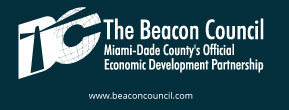Women in the Bosses’ Chair
SPONSORED BY
RESEARCH: Michelle Yan, WorldCity
 IF THE GOAL IS TO FIND a woman firmly ensconced behind the boss’ desk at 50 percent of the multinationals based in South Florida, then the road ahead is either long and arduous or, if you have a different outlook, one filled with opportunity for those rising through the ranks.
IF THE GOAL IS TO FIND a woman firmly ensconced behind the boss’ desk at 50 percent of the multinationals based in South Florida, then the road ahead is either long and arduous or, if you have a different outlook, one filled with opportunity for those rising through the ranks.
Today, of the more than 1,400 multinationals in WorldCity’s proprietary Who's Here database, 12 percent are run by women. That percentage is largely unchanged from when WorldCity first created the Who’s Here database more than 15 years ago.
None of the 36 multinational law firms in Who’s Here had a women in charge
To provide a little context for this closer look of the role women play in top leadership at these multinationals, a little background:
WorldCity’s database includes multinationals from more than 50 nations around the world, representing every continent except one, Antarctica. You can download the annual Who’s Here publication here.
They oversee in excess of $300 billion in annual sales, with more than five dozen of those companies overseeing $1 billion or more. The number of employees working in the three-country South Florida market is more than $150,000 while the number of employees overseen from the same area exceeds 750,000.
The only "outlier" on the list would be Canada, with nine, or 23.1 percent of its multinationals with a woman in charge
It is for this reason that Miami is frequently called the capital of Latin America.
For this survey, in honor of Women’s International Day, which was March 8, we examined a number of factors beyond the percentage with a woman in the top position:
- Percentage by industry, including those above average and those below;
- Percentage of these positions by country;
- Number of women “Billion Dollar Bosses,” in other words, those overseeing at least $1 billion in annual sales.
- Number of employees overseen locally and globally by these women, as compared to their male counterparts, looking at both average and median figures.
 INDUSTRY: Not surprisingly, certain industries are more likely to have a woman in charge while certain others less likely. In looking at industries classifications with at least 25 multinationals, we found that four were particularly below the 12 percent overall average:
INDUSTRY: Not surprisingly, certain industries are more likely to have a woman in charge while certain others less likely. In looking at industries classifications with at least 25 multinationals, we found that four were particularly below the 12 percent overall average:
None of the 36 multinational law firms in Who’s Here had a women in charge; neither did any of the 27 companies in manufacturing within the chemical, plastics and rubber subsection. Those in the insurance carrier and related activities listed two of 35 companies with a woman in charge, or 5.7 percent. Finally, the category for architecture, engineering and related services had women as the top executive at three of the 44 multinationals, or 6.8 percent.
WorldCity identified five industries with at least 25 multinationals where the average exceeded the overall average of 12 percent. Among the 34 real estate companies, nine are led by women, for 26.57 percent, the highest total. That would include multinationals like Keller Williams, CBRE and One Sotheby's.
Advertising, public relations and related services have 10 women among the 53 multinationals, or 18.87 percent. That would be multinationals like Porter Novelli, Young & Rubicam and Universal McCann.
Employment services (six of 34 multinationals) are at 17.65 percent, including Korn Ferry, EMS and LAtin American Executive Search Consultants.
Support activities for transportation/freight forwarding (15 of 87) are at 17.24 percent; and computer systems designs and related services (10 of 63) are at 15.87 percent.
BY COUNTRY: Although more than 50 nations are represented in the Who’s Here database, only nine – the United States (830), Spain (85), United Kingdom (60), France (48), Canada (39), Switzerland (36), Germany (35), the Netherlands (34) and Japan (27) – have more than 25 companies based in their countries.
Looking at just those, the only "outlier" on the list would be Canada, with nine, of 23.1 percent of its multinationals with a woman in charge. The United States is slightly below the 12 percent average, at 11.7 percent, as is Spain, at 11.8 percent. The United Kingdom is at 10 percent and the Netherlands is at 5.88 percent.
Joining Canada above the average are France at 16.7 percent, Japan at 16 percent, Germany at 14.3 percent and Switzerland at 13.9 percent.
Within Latin America, three of 22 companies have a woman in charge, for 13.64 percent; Mexico is at two of 16, or 12.5 percent; and Colombia, one of 14, or 7.14 percent.
BILLION-DOLLAR BOSSES: Within the Who’s Here database, we identified four multinationals that oversee at least $1 billion in annual revenues from the South Florida office. Overall, WorldCity has identified more than 60. The four with women in charge, according to WorldCity research:
- Mary Jo Eaton at CBRE. CBRE revenues overseen from South Florida total $4.28 billion.
- Romaine Sequin at UPS, with revenues in excess of $2.91 billion.
- Doria Camaraza at American Express, with revenues of $2.77 billion.
- Cheryl McDowell at Oracle, with revenues of $2.50 billion.
 EMPLOYEES: Finally, WorldCity looked at employees. The summation would be this – and it’s not particularly surprising: Women oversee not only fewer companies than their male counterparts but they oversee offices with fewer employees locally and fewer employees globally that are under their supervision.
EMPLOYEES: Finally, WorldCity looked at employees. The summation would be this – and it’s not particularly surprising: Women oversee not only fewer companies than their male counterparts but they oversee offices with fewer employees locally and fewer employees globally that are under their supervision.
To get to this, WorldCity looked at both the average number of employees managed and the median number. Within both, we looked at the number of employees managed locally versus the number of employees managed globally from South Florida.
In case it helps, a quick refresher on high school mathematics: For the average, we divided the total employees managed by the number of companies managing them, first for female-led multinationals and then male-led ones. For the median, we wanted the middle point on the total list of multinationals – where half the multinationals have more employees and half have fewer.
First, local employees. The average for multinationals with a woman in the position is 98.35 while the average for those with a male boss is 137. The median for both is much lower: 12 for female-led multinationals and 29.5 for those with a male boss.
Why the big difference between average and median? Because a relatively small percentage of multinationals have a great number of employees – inflating the average, relative to the median – while most have relatively small offices in South Florida. Interestingly, the difference between the sexes on the average is about 40 percent while the difference on the median is almost 150 percent.
Switching to look at global employees overseen, the average for multinationals with a woman in charge is 92.49 while for those with a man in charge it is 598.04 – almost six times as many. On the median, the respective numbers are 14.5 and 37 – about 2.5 times as many.
SECOND IN SERIES: This is the second in a series of monthly reports from Who’s Here. (Click here to read the first, an overview.) If you did get to this page after receiving a Multinational Minute email with a link to this report and would like to do so in the future, please email sgovantes@45.56.65.150 so we can add you to our list.

